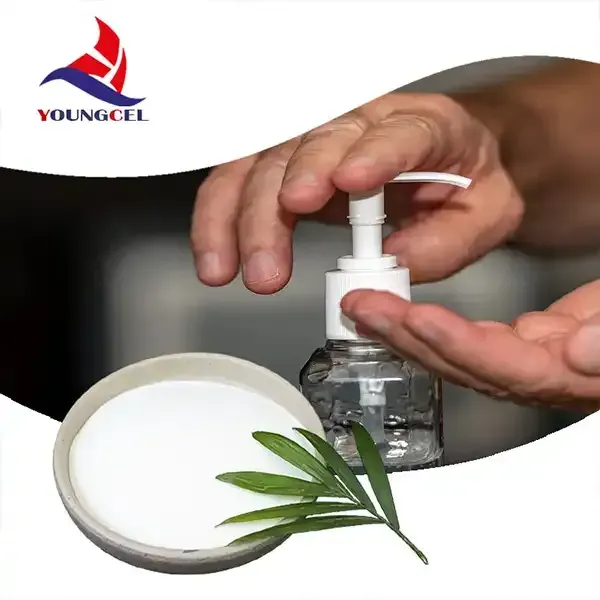The Importance of Cellulose Ether Focusing on HPMC
In the realm of materials science and chemistry, cellulose ethers are crucial additives that enhance the properties of various products, including pharmaceuticals, construction materials, and food. Among these cellulose ethers, Hydroxypropyl Methylcellulose (HPMC) stands out due to its unique characteristics and versatility. HPMC is a modified form of cellulose derived from natural cellulose through a series of chemical processes. This article delves into the significance of HPMC, its applications, and its advantages.
What is HPMC?
HPMC is a semi-synthetic polymer that belongs to the cellulose ether family. It is formed by the hydroxypropyl and methyl substitution of the hydroxyl groups in cellulose. This modification alters the physical and chemical properties of cellulose, leading to a compound that is soluble in cold water and forms a clear gel when mixed. HPMC is available in various viscosity levels and degrees of substitution, making it adaptable for different applications.
Applications of HPMC
HPMC serves diverse functions across multiple industries
1. Pharmaceuticals HPMC is widely used in the pharmaceutical sector as a film-forming agent, binder, and controlled-release polymer. It helps to improve the bioavailability of drugs by enhancing solubility and stability. Moreover, its ability to form hydrogels makes it ideal for use in controlled drug release formulations, ensuring a consistent and prolonged therapeutic effect.
2. Construction In the construction industry, HPMC is a valuable additive in cement, mortars, and tile adhesives. It improves workability, water retention, and adhesion in construction materials. Additionally, HPMC helps to extend the open time of mortars, allowing for more flexible application processes, which is essential for efficient construction projects.
3. Food Industry HPMC is utilized as a food additive, primarily as a thickening agent, emulsifier, and stabilizer. It helps to improve the texture and consistency of food products. For instance, it is used in desserts, sauces, and dressings, enhancing their mouthfeel and shelf-life while being classified as a safe food additive.
cellulose ether hpmc

4. Personal Care Products In cosmetics and personal care formulations, HPMC acts as a thickening and gelling agent. It can be found in lotions, creams, and shampoos, imparting desirable textures while keeping formulations smooth and stable.
Advantages of HPMC
The popularity of HPMC across these sectors can be attributed to several advantages
- Biocompatibility HPMC is derived from natural cellulose, making it biocompatible and safe for use in pharmaceuticals and food applications. Its low toxicity profile ensures that it can be used without risk to human health.
- Water Solubility One of the most attractive properties of HPMC is its solubility in cold water, allowing for easy incorporation into various formulations. This trait is particularly beneficial in applications like pharmaceuticals, where drug formulation often requires quick and effective solvent action.
- Viscosity Control HPMC allows for precise control over viscosity and texture in formulations. This property is especially valuable in the food and personal care industries, where consistency is key to consumer satisfaction.
- Thermal Stability HPMC exhibits excellent thermal stability, making it suitable for high-temperature applications. This stability ensures that products maintain their desired properties, even in challenging conditions.
Conclusion
Hydroxypropyl Methylcellulose (HPMC) plays a significant role in various industries due to its unique properties and versatility. From pharmaceuticals to food production and construction, HPMC enhances product performance, safety, and consumer experience. As the demand for safe and effective additives continues to grow, the relevance of HPMC in materials science and product formulation is set to expand further. Understanding the importance of cellulose ethers like HPMC is essential for professionals across different fields to create improved and innovative products that meet the needs of today’s market.
-
Rdp Powder: Key Considerations for Wholesalers in the Building Materials IndustryNewsJul.08,2025
-
Key Considerations for Wholesalers: Navigating the World of Hpmc - Based ProductsNewsJul.08,2025
-
Hpmc Detergent: Key Considerations for WholesalersNewsJul.08,2025
-
Key Considerations for Wholesalers: China Hpmc For Tile Adhesive, Coating Additives, Concrete Additives, and MoreNewsJul.08,2025
-
Crucial Considerations for Wholesalers: Navigating the World of Construction MaterialsNewsJul.08,2025
-
Key Considerations for Wholesalers Sourcing Additive For Cement, Additive For Concrete, Additive For Putty from Additive Manufacturer Shijiazhuang Gaocheng District Yongfeng Cellulose Co., Ltd.NewsJul.08,2025




